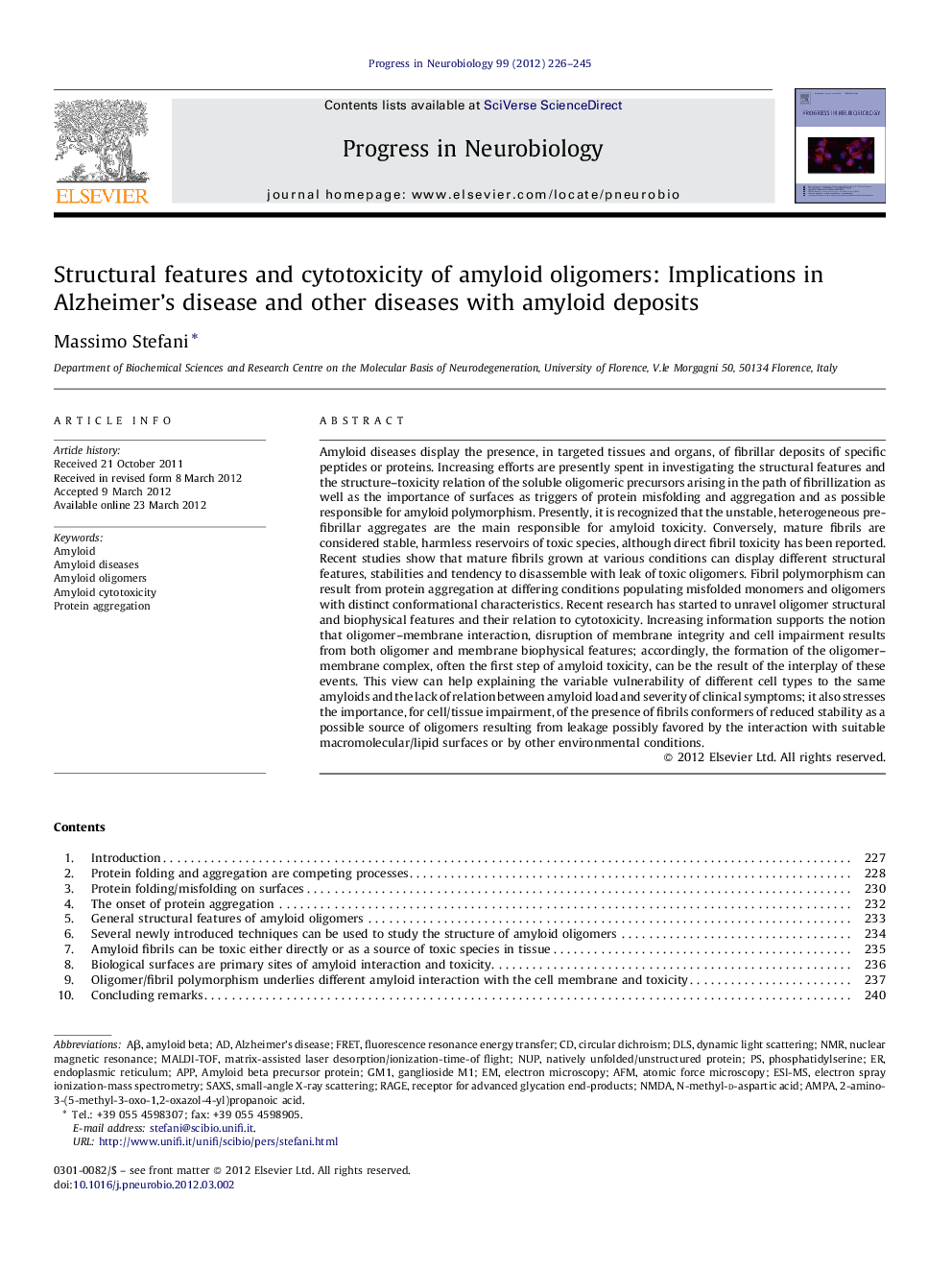| کد مقاله | کد نشریه | سال انتشار | مقاله انگلیسی | نسخه تمام متن |
|---|---|---|---|---|
| 4353402 | 1298454 | 2012 | 20 صفحه PDF | دانلود رایگان |

Amyloid diseases display the presence, in targeted tissues and organs, of fibrillar deposits of specific peptides or proteins. Increasing efforts are presently spent in investigating the structural features and the structure–toxicity relation of the soluble oligomeric precursors arising in the path of fibrillization as well as the importance of surfaces as triggers of protein misfolding and aggregation and as possible responsible for amyloid polymorphism. Presently, it is recognized that the unstable, heterogeneous pre-fibrillar aggregates are the main responsible for amyloid toxicity. Conversely, mature fibrils are considered stable, harmless reservoirs of toxic species, although direct fibril toxicity has been reported. Recent studies show that mature fibrils grown at various conditions can display different structural features, stabilities and tendency to disassemble with leak of toxic oligomers. Fibril polymorphism can result from protein aggregation at differing conditions populating misfolded monomers and oligomers with distinct conformational characteristics. Recent research has started to unravel oligomer structural and biophysical features and their relation to cytotoxicity. Increasing information supports the notion that oligomer–membrane interaction, disruption of membrane integrity and cell impairment results from both oligomer and membrane biophysical features; accordingly, the formation of the oligomer–membrane complex, often the first step of amyloid toxicity, can be the result of the interplay of these events. This view can help explaining the variable vulnerability of different cell types to the same amyloids and the lack of relation between amyloid load and severity of clinical symptoms; it also stresses the importance, for cell/tissue impairment, of the presence of fibrils conformers of reduced stability as a possible source of oligomers resulting from leakage possibly favored by the interaction with suitable macromolecular/lipid surfaces or by other environmental conditions.
► Amyloid structural, biophysical and toxicity properties depend on growth conditions.
► Membranes recruit and unfold proteins, nucleate and bind oligomers.
► Amyloid toxicity results from the both oligomer and membrane biophysical features.
Journal: Progress in Neurobiology - Volume 99, Issue 3, December 2012, Pages 226–245